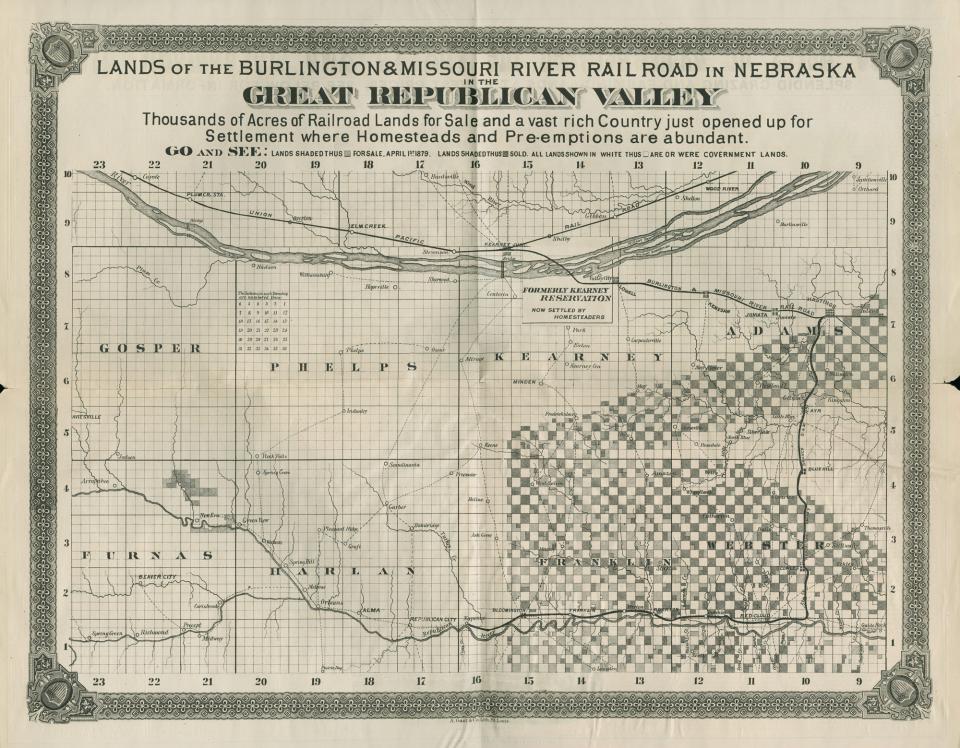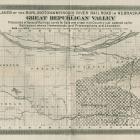
CB&Q map of Great Republican Valley showing lands of the Burlington & Missouri River R.R. in Nebraska.
CB&Q map of Great Republican Valley showing lands of the Burlington & Missouri River R.R. in Nebraska.
Courtesy of Newberry Library. CB&Q 769.8.
Used with permission of the Newberry Library. With questions about reuse of this image, contact the Newberry Library.
The copyright holder reserves, or holds for their own use, all the rights provided by copyright law, such as distribution, performance, and creation of derivative works.
This image appears in: Olmanson, Eric D. “Promotion and Transformation of Landscapes along the CB&Q Railroad.” Environment & Society Portal, Virtual Exhibitions 2011, no. 1. Rachel Carson Center for Environment and Society. http://www.environmentandsociety.org/node/7853.
Fort Child was established after 1842 to protect the Oregon Trail. It was renamed Fort Kearny in 1848 to honor General Stephen Watts Kearny. The fort was not barricaded and mainly served as a way station and post office for immigrants. Kearney Junction (now just Kearny) was where the B&MR Railroad joined the Union Pacific Railroad. A branch of the B&MR road goes through the Republican Valley. The shaded squares show section granted by the US General Land Office to the B&MR Railroad to sell to settlers to help fund the building of roads. The lighter squares were “for sale, April 1st 1879” suggesting that the map must have been printed before that date. The darker squares represent B&MR lands that have already been sold. Near the bend in the B&MR branch line is the town of Red Cloud, founded in 1871 and named for the Oglala Lakota (Sioux) leader. Oddly enough, in Jules Verne’s 1873 novel, Around the World in Eighty Days, a train under attack by the Sioux stopped and sought help from soldiers at Fort Kearny. Note some of the place names westward and up the Republican River from Red Cloud: Pleasant Ridge, New Era, Freewater, Scandinavia, Green View, Graft. Although Fort Kearny was more a way station than a fort, the succession of fort to settlement symbolizes the passing of the frontier.
—Eric D. Olmanson
Read more here.


